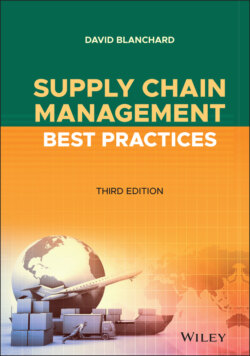Читать книгу Supply Chain Management Best Practices - David Blanchard - Страница 34
Setting Your Sights High
ОглавлениеAlthough companies typically benchmark themselves against competitors or at least similar companies within their industry, sometimes it's possible to gain that competitive advantage Tompkins mentioned by looking completely outside the usual suspects. ConAgra Mills, for instance, one of the largest grain producers in North America, looked well beyond the agricultural industry to improve its customer service by studying the airline industry.
When he was promoted to president of ConAgra Mills in 2010, Bill Stoufer's background included stints managing the company's transportation and logistics, sales, and supply chain operations. So being well versed in best practices within various departments of his own company, he found a way to better maximize production capacity by looking completely outside of process manufacturing.
As Stoufer (who has since retired) notes, agriculture and air transportation aren't necessarily completely dissimilar. “If a plane leaves with empty seats, they miss the opportunity to maximize their business. It's the same within the milling business.” ConAgra's “empty seats” problem was that some of its flour-producing plants were operating at capacity, while others were not. Since both industries share the same goal—minimizing unused capacity without overcommitting resources—ConAgra turned to an airline best practice of using analytics to predict future market conditions. The solution has allowed the company to focus on producing its most profitable products, and has increased capacity utilization by 3% to 5%.13
Predictive analytics can also pay off while benchmarking transportation. As Kevin Zweier, vice president of transportation with supply chain consulting firm Chainalytics, explains, “Benchmarks that are modeled in a predictive software platform allow [companies] to assess the difference between transportation rates they are paying, on a lane-by-lane level, against the overall market's rates for the same lanes.” Having access to freight market intelligence, which offers companies deeper insights into the freight transportation markets, allows companies to operate more effectively by ensuring their products “are moving at the best rate for the desired service level.” These model-based benchmarks, Zweier points out, give supply chain and transportation managers key information that can help them negotiate better rates when going to bid.14 (See Chapter 4 for more discussion of freight market intelligence.)
